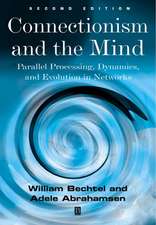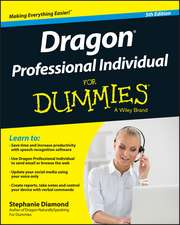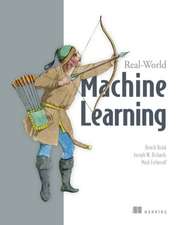Computer Games II
Editat de David N.L. Levyen Limba Engleză Paperback – 18 ian 2012
Preț: 658.65 lei
Preț vechi: 823.32 lei
-20% Nou
Puncte Express: 988
Preț estimativ în valută:
126.03€ • 131.94$ • 104.28£
126.03€ • 131.94$ • 104.28£
Carte tipărită la comandă
Livrare economică 05-19 aprilie
Preluare comenzi: 021 569.72.76
Specificații
ISBN-13: 9781461387565
ISBN-10: 1461387566
Pagini: 564
Ilustrații: XV, 546 p.
Dimensiuni: 155 x 235 x 30 mm
Greutate: 0.78 kg
Ediția:Softcover reprint of the original 1st ed. 1988
Editura: Springer
Colecția Springer
Locul publicării:New York, NY, United States
ISBN-10: 1461387566
Pagini: 564
Ilustrații: XV, 546 p.
Dimensiuni: 155 x 235 x 30 mm
Greutate: 0.78 kg
Ediția:Softcover reprint of the original 1st ed. 1988
Editura: Springer
Colecția Springer
Locul publicării:New York, NY, United States
Public țintă
ResearchDescriere
Long before the advent of the electronic computer, man was fascinated by the idea of automating the thought processes employed in playing games of skill. The very first chess "Automaton" captured the imagination oflate eighteenth century Vienna, and by the early 1900s there was a genuine machine that could play the chess endgame of king and rook against a lone king. Soon after the invention of the computer, scientists began to make a serious study of the problems involved in programming a machine to play chess. Within a decade this interest started to spread, first to draughts (checkers) and later to many other strategy games. By the time the home computer was born, there had already been three decades of research into computer games. Many of the results of this research were published, though usually in publications that are extremely difficult (or even impossible for most people) to find. Hence the present volumes. Interest in computers and programming has now reached into almost every home in the civilized world. Millions of people have regular access to computers, and most of them enjoy playing games. In fact, approximately 80 percent of all software sold for use on personal computers is games software.
Cuprins
(Volume II).- 1 Bridge.- 1.1. Program for Double-Dummy Bridge Problems—A New Strategy for Mechanical Game Playing.- 1.2. BRIBIP: A Bridge-Bidding Program.- 1 3 Planning to Make Tricks at Bridge.- 1.4. A Knowledge-Based System for Locating Missing High Cards in Bridge.- 2 Chemin-de-Fer.- 2.1. A Computer Technique for Game-Theoretic Problems. Chemin-de-Fer Analyzed.- 3 Dama.- 3.1. Some Remarks on the Game “Dama” Which Can Be Played on a Digital Computer.- 4 Dominoes.- 4.1. A Learning Program Which Plays Partnership Dominoes.- 4.2. On Algorithms and Programming for Playing at Dominoes.- 5 Go.- 5.1. The Mystery of Go.- 5.2. Computer Go.- 5.3. Simulation of a Learning Machine for Playing Go.- 5.4. A Partial Analysis of Go.- 5.5. A Computer-Assisted Study of Go on M × N Boards.- 5.6. Goals and Plans in a Program for Playing Go.- 5.7. Perception and Representation of Spatial Relations in a Program for Playing Go.- 5.8. Life in the Game of Go.- 5.9. Pattern Recognition and Pattern-Directed Inference in a Program for Playing Go.- 5.10. The Structure and Performance of the INTERIM.2 Go Program.- 5.11. An Approach to Conquer Difficulties in Developing a Go-Playing Program.- 5.12. Tree-Analysis Techniques in Tsumego.- 6 Go-Moku.- 6.1. Experiments with a Learning Component in a Go-Moku-Playing Program.- 6.2. Automatic Description and Recognition of Board Patterns in Go-Moku.- 6.3. Some New Approaches to Machine Learning.- 6.4. A Program of Master-Strength to Play Five-in-a-Row.- 7 Halma.- 7.1. Design Considerations in Relation to Computer-Based Problems.- 8 Hearts.- 8.1. A Digital Computer Card-Playing Program.- 9 Othello.- 9.1. A World-Championship-Level Othello Program.- 10 Poker.- 10.1. Computer Model of Gambling and Bluffing.- 10.2. Studies on Decision Making Using the Game of Poker.- 10.3. Studies in Machine Cognition Using the Game of Poker.- 11 Push-Over.- 11.1. Programming Strategies in the Game of Push-Over.- 12 Qubic (Three-Dimensional “Tic-Tac-Toe” or “Noughts and Crosses”).- 12.1. Computer Strategies for the Game of Qubic.
















